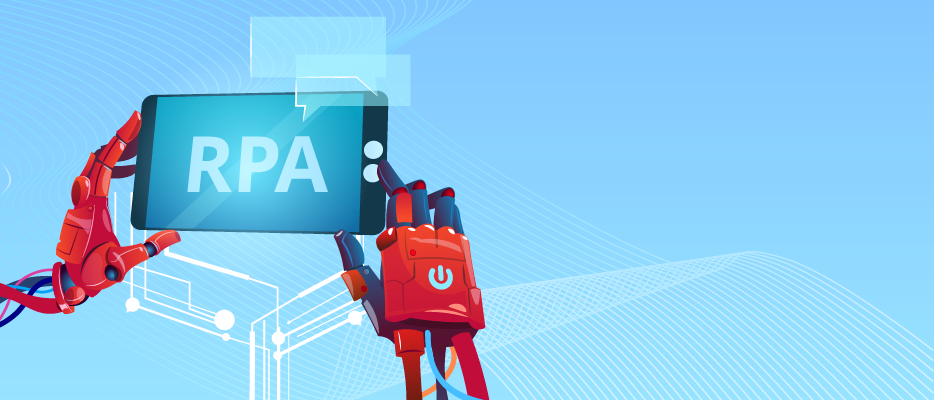
Demystifying RPA: Insights From the ABBYY Expert's Guide

Demystifying RPA: Insights From the ABBYY Expert’s Guide
Understanding Robotic Process Automation
Anthony Macciola
April 19, 2018

All the rave these days is around artificial intelligence (AI) as the technology continues to shake up the C-suite while gaining a seat at the table. For C-suite executives however, robotic process automation (RPA) is panning out as the most exciting tool in their digital transformation toolbox. With new compliance regulations looming large, organizations need RPA to help unlock the hidden value in both structured and unstructured documents. Highly regulated industries that control large volume of data and continuously strive for improvement stand to gain most from cognitive automation, which brings intelligence to RPA.
What is RPA?
RPA is the application of technology that uses software robots to interact and perform specific tasks within existing applications, much like employees do for processing a transaction, manipulating data, triggering responses and communicating with other digital systems. The value of RPA has been driven by its ease of use and the quick ROI that can be achieved. Both business and technical users can build “robots” without the need for costly and time-consuming coding. Like most technologies, there are various levels of capabilities available to meet various needs. With RPA, there are three levels: basic, enhanced and cognitive.
Basic RPA focuses on automating simple, repeatable, rules-driven processes, providing recorders to capture and imitate what a user does; extracting data from application screens, workflow automation, Visio-type building blocks and reusable components; and using robots to execute those processes independently or as part of a larger business process. The robots eliminate the “swivel chair” processes for data entry commonly seen in banking, insurance, logistics and transportation, as well as in finance for invoice processing.
Enhanced RPA addresses automation of processes that often involves less structured, more specialized content. Tools and platforms supporting enhanced process automation offer some capabilities such as out-of-the-box, built-in knowledge; an understanding of natural language; ability to consume and leverage unstructured data; automated learning capability; pattern recognition; and e-bonding capabilities to other well-established software platforms.
Cognitive RPA combines advanced technologies such as natural language processing, artificial intelligence, machine learning and data analytics to mimic human activities such as perceiving, inferring, gathering evidence, hypothesizing, reasoning and interacting with human counterparts. Envision the capabilities in self-driving vehicles where systems are taught rather than programmed, a process that can take months to years depending on the complexity of the problem domain. While Cognitive RPA requires the largest investment in time and dollars, it also has the greatest potential to transform.
RPA could be the best answer for companies falling behind with compliance for the EU’s General Data Protection Regulation (GDPR). Incorporating RPA with intelligent capture solutions will help organizations derive content analytics to gain insights into content. The following are five specific ways content analytics can aid in GDPR compliance efforts:
- Identifying Meaningful Insights: Organizations must be able to identify key pieces of information within every document, file and object analyzed. It can include any terms that have specialized meaning or significance with the domains (for example, terms related to protected classes in human resources documents). The advantage of automated processes enabled by RPA and intelligent capture is real-time access to information in an easily traversable, hierarchical map, and the system is proactively extracting, classifying and presenting critical insights to the user.
- Establishing a Record Policy: In the normal course of business, organizations capture data containing personally identifiable information (PII) and need to recognize procedures to ensure they are compliant. RPA and intelligent capture solutions can auto-classify a document and extraction data and apply a record policy to help meet GDPR. If PII data does not meet an established policy, an alert could be generated to intercept and resolve the issue.
- Aggregating Content: All content within an organization should be accessible in aggregate form based on rules-based terminology. Standardizing terminology across input sources enables content repositories to connect; this is especially helpful for disparate source types.
- Event-Driven Aggregation: Content relevant to a specific internal or external event – such as a merger or a sale to specific customers – can be aggregated in real time. This is especially useful if an organization needs to look into fraudulent activity.
- Tracking and Comparing: Users can track changes to a unit of content and compare versions or different content files with respect to specific concepts or clauses.
GDPR will touch nearly every business unit in the enterprise and nearly every contract, including financial, legal, procurement, human resources, sales and marketing, making the accessibility of the data contained within these contracts crucial to compliance. As the GDPR deadline nears, organizations should consider investing in technology that leverages RPA and intelligent capture to gain content analytics.
This blog is an abridged version of an article (The Impact of RPA on GDPR) that appeared in the online forum: Corporate Compliance Insights. Click here to read the original post: http://www.corporatecomplianceinsights.com/impact-rpa-gdpr/
Data Privacy Robotic Process Automation (RPA) OCR

Anthony Macciola
Like, share or repost
Share
Subscribe for blog updates
First name*
E-mail*
Сountry*
СountryAfghanistanAland IslandsAlbaniaAlgeriaAmerican SamoaAndorraAngolaAnguillaAntarcticaAntigua and BarbudaArgentinaArmeniaArubaAustraliaAustriaAzerbaijanBahamasBahrainBangladeshBarbadosBelgiumBelizeBeninBermudaBhutanBoliviaBonaire, Sint Eustatius and SabaBosnia and HerzegovinaBotswanaBouvet IslandBrazilBritish Indian Ocean TerritoryBritish Virgin IslandsBrunei DarussalamBulgariaBurkina FasoBurundiCambodiaCameroonCanadaCape VerdeCayman IslandsCentral African RepublicChadChileChinaChristmas IslandCocos (Keeling) IslandsColombiaComorosCongo (Brazzaville)Congo, (Kinshasa)Cook IslandsCosta RicaCroatiaCuraçaoCyprusCzech RepublicCôte d’IvoireDenmarkDjiboutiDominicaDominican RepublicEcuadorEgyptEl SalvadorEquatorial GuineaEritreaEstoniaEthiopiaFalkland Islands (Malvinas)Faroe IslandsFijiFinlandFranceFrench GuianaFrench PolynesiaFrench Southern TerritoriesGabonGambiaGeorgiaGermanyGhanaGibraltarGreeceGreenlandGrenadaGuadeloupeGuamGuatemalaGuernseyGuineaGuinea-BissauGuyanaHaitiHeard and Mcdonald IslandsHoly See (Vatican City State)HondurasHong Kong, SAR ChinaHungaryIcelandIndiaIndonesiaIraqIrelandIsle of ManIsraelITJamaicaJapanJerseyJordanKazakhstanKenyaKiribatiKorea (South)KuwaitKyrgyzstanLao PDRLatviaLebanonLesothoLiberiaLibyaLiechtensteinLithuaniaLuxembourgMacao, SAR ChinaMacedonia, Republic ofMadagascarMalawiMalaysiaMaldivesMaliMaltaMarshall IslandsMartiniqueMauritaniaMauritiusMayotteMexicoMicronesia, Federated States ofMoldovaMonacoMongoliaMontenegroMontserratMoroccoMozambiqueMyanmarNamibiaNauruNepalNetherlandsNetherlands AntillesNew CaledoniaNew ZealandNicaraguaNigerNigeriaNiueNorfolk IslandNorthern Mariana IslandsNorwayOmanPakistanPalauPalestinian TerritoryPanamaPapua New GuineaParaguayPeruPhilippinesPitcairnPolandPortugalPuerto RicoQatarRomaniaRwandaRéunionSaint HelenaSaint Kitts and NevisSaint LuciaSaint Pierre and MiquelonSaint Vincent and GrenadinesSaint-BarthélemySaint-Martin (French part)SamoaSan MarinoSao Tome and PrincipeSaudi ArabiaSenegalSerbiaSeychellesSierra LeoneSingaporeSint Maarten (Dutch part)SlovakiaSloveniaSolomon IslandsSouth AfricaSouth Georgia and the South Sandwich IslandsSouth SudanSpainSri LankaSurinameSvalbard and Jan Mayen IslandsSwazilandSwedenSwitzerlandTaiwan, Republic of ChinaTajikistanTanzania, United Republic ofThailandTimor-LesteTogoTokelauTongaTrinidad and TobagoTunisiaTurkeyTurks and Caicos IslandsTuvaluUgandaUkraineUnited Arab EmiratesUnited KingdomUnited States of AmericaUruguayUS Minor Outlying IslandsUzbekistanVanuatuVenezuela (Bolivarian Republic)Viet NamVirgin Islands, USWallis and Futuna IslandsWestern SaharaZambiaZimbabwe
I have read and agree with the Privacy policy and the Cookie policy .
I agree to receive email updates from ABBYY Solutions Ltd. such as news related to ABBYY Solutions Ltd. products and technologies, invitations to events and webinars, and information about whitepapers and content related to ABBYY Solutions Ltd. products and services.
I am aware that my consent could be revoked at any time by clicking the unsubscribe link inside any email received from ABBYY Solutions Ltd. or via ABBYY Data Subject Access Rights Form .
Referrer
Last name
Query string
Product Interest Temp
UTM Campaign Name
UTM Medium
UTM Source
ITM Source
GA Client ID
UTM Content
GDPR Consent Note
Captcha Score
Page URL
Connect with us
Also read:
- [New] Unlimited Outro Options at No Expense Online
- [Updated] Launch Your Wealth Journey on Periscope Platform
- 伝票管理にAI OCRの活用がもたらす変革: RPA併用で年間4.9万時間減少達成
- Automatisierte Rechnungsbearbeitung Für Energielieferanten Mit Branchenrelevanz – Empfehlungen Von ABBYY
- Boost Site Traffic with Cookiebot Integration Strategies
- Boost Web Visibility Instantly Using the Powerful Cookiebot SEO Tech
- Effortless Android Screenshot & Screen Record for 2024
- In 2024, Navigating YouTube's Puzzling Buffering Patterns
- In 2024, Tips and Tricks for Apple ID Locked Issue From iPhone 15 Pro
- The Most Useful Tips for Pokemon Go Ultra League On Oppo K11 5G | Dr.fone
- Unmatched Selection of Premium Xbox Capture Cards
- Title: Demystifying RPA: Insights From the ABBYY Expert's Guide
- Author: Matthew
- Created at : 2024-10-09 20:58:02
- Updated at : 2024-10-14 19:45:00
- Link: https://solve-popular.techidaily.com/demystifying-rpa-insights-from-the-abbyy-experts-guide/
- License: This work is licensed under CC BY-NC-SA 4.0.